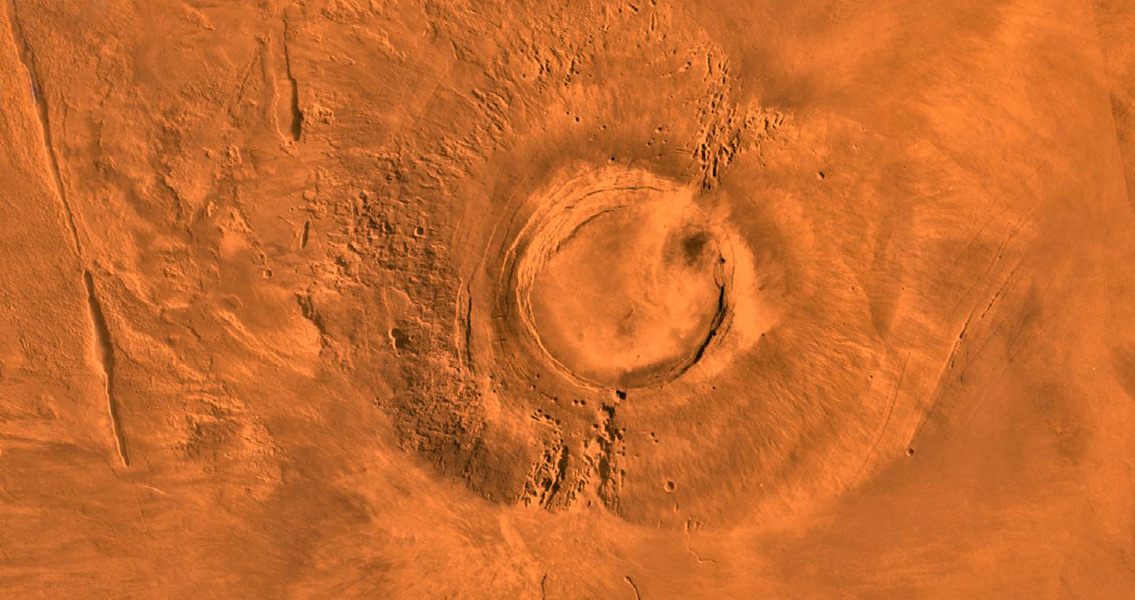<![CDATA[New research by NASA into Arsia Mons, a massive shield volcano on the surface of Mars, indicates that the last time the volcano was active coincided with the death of dinosaurs on our own planet. No, no one is saying one event has to do with the other. However, determining the timeline for Arsia Mons from peak activity to extinction had been tricky for scientists for some time until new computer modeling techniques were developed to better read the details of the far-off caldera. According to a press release from NASA’s Goddard Space Flight Center in Greenbelt, Maryland, a team of Goddard researchers led by Jacob Richardson have determined that peak activity for Arsia Mons occurred some 150 million years ago, equivalent with Earth’s late Jurassic period. The volcano then died out around the same time that the dinosaurs on Earth were breathing their last, Richardson said. Arsia Mons, located south of the equator of the Red Planet, is the southern terminus of the Tharsis Montes, a mountain range consisting of three shield volcanoes. Massive in scope, the caldera of Arsia Mons could easily hold the volume of water within Earth’s Lake Huron with room to spare. NASA researchers were able to identify 29 volcanic vents in this gargantuan caldera. Some of these required the help of the Mars Reconnaissance Orbiter, the NASA satellite stationed high above Mars, which is equipped with high-resolution imaging capabilities from its Context Camera. By mapping the boundaries from each vent’s lava flows, the team was able to determine the layering of these flows. Another technique, which involved taking a census of the number of craters that were 100 meters in diameter and larger, also aided in estimating the ages of these lava flows. Richardson’s team developed a new computer model to combine both types of information in order to generate a timeline for the vents littering the caldera of Arsia Mons. The oldest of these vents issued lava flows around 200 million years ago; the youngest flows occurred likely around the 50 million year ago mark. The computer modeling didn’t just indicate age, though; it also revealed the volume of each flow. Around 150 million years ago, during the peak activity time for the volcano’s vents, anywhere from 1 to 8 cubic kilometers of magma accumulated in the volcano every million years. Richardson likened the magma flow to “a slow, leaky faucet,” adding that while volcanic vents on Earth are created about once every 10,000 years or so, Arsia Mons only created a vent every 1 to 3 million years at peak activity. The new data will help pave the way to better understand the timeline of volcanic activity on the Red Planet. This in turn leads to a more complete picture of the history and interior structure of Mars. Study co-author Jacob Bleacher, a Goddard planetary geologist, said that with the major goal of the Mars volcanology community to understand the lifecycle and anatomy of the planet’s volcanoes, the recent research provides more clues into that process. The research study, published in the journal Earth and Planetary Science Letters, can be found here Image courtesy of NASA/JPL/USGS]]>
Massive Mars Volcano Last Active During Dinosaur Die-Off
